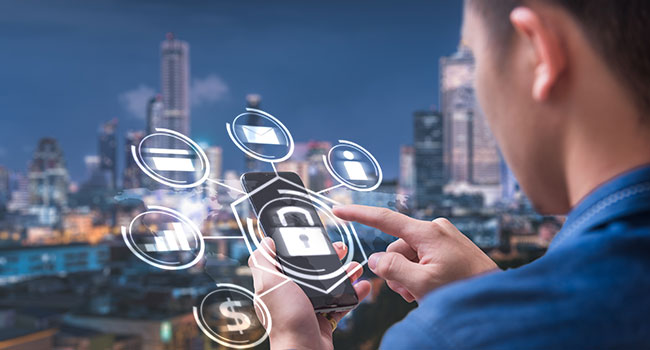
Making Your Security and Surveillance “Smarter”
Many vehicles, homes and businesses already have some level of “smart” technology and automation currently in use. That trend will only accelerate through increased use of more sophisticated mobile and connected devices, combined with AI, for more consumer and professional applications.
The key to enabling – and securing -- these “smart” technology applications transformation is a reliable and fully integrated IoT infrastructure.
IoT offers a range of mobile and connected devices and technologies in use every day in our work and personal lives. The “things” can be physical objects that feature a sensor, some type of processing ability, are software-centric and can store and send data to and from other connected devices.
It is a growing space, with the IoT device market forecast to reach $1.4 trillion by 2027, according to Fortune Business Insights.
IoT is a broad term and the types of devices it covers are equally broad, ranging from self-driving cars to appliances to healthcare or retail devices and -- networked security systems.
Of course, once you introduce any degree of network connectivity or shared access to a device, the potential for intrusion or vulnerability increases exponentially. That is a fundamental principle of IoT applications and one that must be managed properly if an organization hopes to realize a truly connected environment with high-performance video surveillance.
Smart devices, for all their benefits in terms of productivity and efficiency, also provide new potential attack surfaces for bad actors to gain access to confidential data or proprietary company resources.
IoT technology can truly enhance the performance of an IP video camera network, and there are several steps an organization can take to minimize the associated risks such as limiting video camera access to only authorized users with limited permissions, deploying multi-factor authentication, or even implementing Zero Trust security policies.
On the other hand, it is a certainty that our personal and work lives will only grow more connected and “smart” so the positive results of a safe and secure IoT infrastructure are a safer and more secure society and world.
And a more automated one too. The potential for cameras that don’t require human operation is already proven in broadcast, sports, and live entertainment. We’ve already seen how this type of network is driving innovation in a range of municipal services – from AI-assisted traffic management systems to more effective city planning capabilities using predictive modeling. We will see more advancements in AI-powered data analytics to deploy existing solutions in new “smart” applications across a range of vertical markets and customer applications, for example, retail, manufacturing and even cities. It’s the way of the future -- and that future is already happening now.
The connectivity and digital services resulting from these networked efforts change people's lives and work styles -- autonomous driving cars, managing supply chain, shared infrastructure for disaster response, robotics, and even niche areas within industrial IoT such as maritime, energy or transportation.
Take as an example, the modern office building or work environment. We’re seeing the rise of “smart” office buildings, where commonly used building management systems are all networked and integrated with physical security and surveillance systems. These systems may include building automation functions and management systems such as lighting control, access control, building access control, people movers (escalators, walkways, elevators), fire control/suppression systems, physical security systems including cameras and HVAC.
While each of these can operate independently, many building management systems are integrating, while still segmenting, these disparate functions into a centralized, distributed network.
The smart building concept complements traditional building management systems through a combination of connected devices, sensors and software to monitor and control building infrastructure, analyze usage data, and generate insights on people traffic and usage patterns.
For example, a smart building’s HVAC systems can be programmed to pre-defined temperature levels based on previous patterns of occupancy levels at certain times of the day or year. Specific elevator banks can be turned on or off according to known daily employee traffic patterns.
Having this degree of control over building systems can result in significant cost savings, increased energy efficiency, greater employee convenience and a more comfortable working environment.
But operating a smart building with connected IoT devices can also open the door to increased risks of cybersecurity attacks – unless the right policies, and organizational mindset, are in place. Configuring a physical network that connects all these subsystems means the controllers in these systems’ sensors are now inter-connected.
And a commercial building is just one example of the benefits – and resulting security challenges -- of designing, managing and securing increasingly complex IoT environments. The examples can extend to school or churches with multiple campuses, companies with hybrid and remote employees or data centers.
Even with the rising number of recent high-profile cyber-attacks, unfortunately, cybersecurity still remains an afterthought for many organizations.
It is also important to remember that the ultimate target of an attack might not be the facility itself; that could simply be the easiest entry point into an organization, allowing an adversary to then pivot toward the higher-value business functions that are their real targets. For example, if a cyber-criminal wants to bring down a financial services firm’s data center, then what’s a better way than attacking the cooling system that maintains the data center?
Based on our leading vision and AI technologies, Hanwha Vision will expand its business by collaborating with competitive partners through our robust ecosystem to provide practical solutions to customers in various industries.